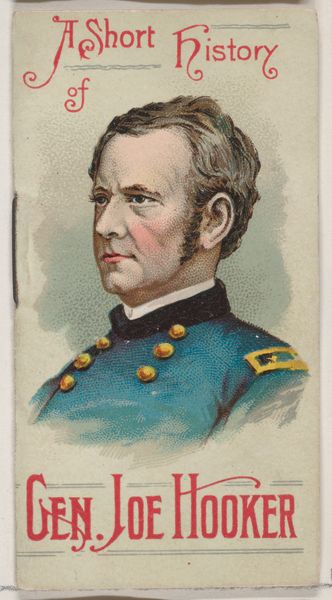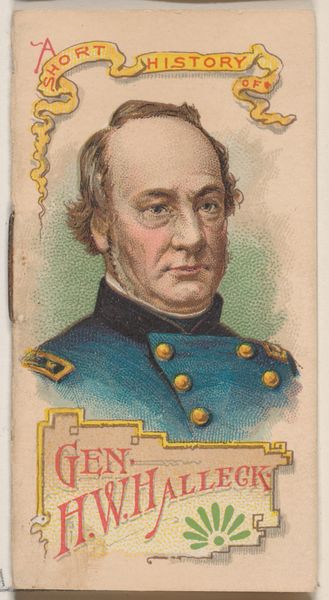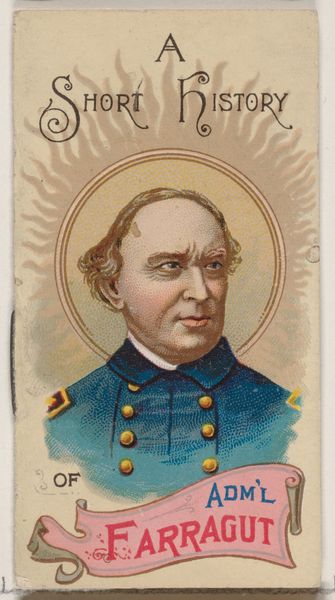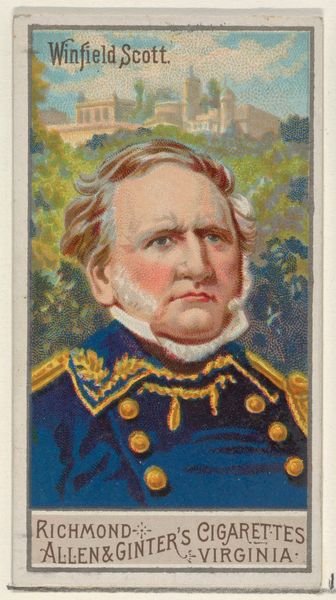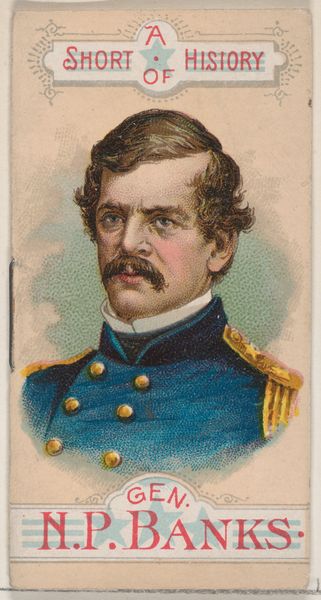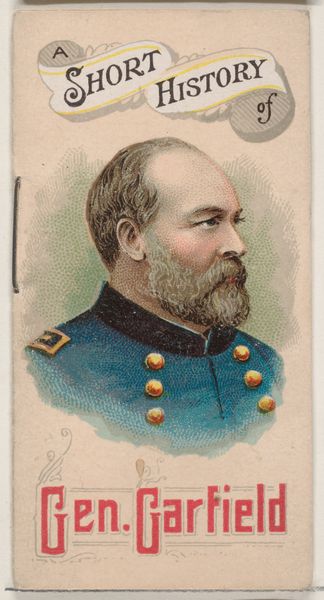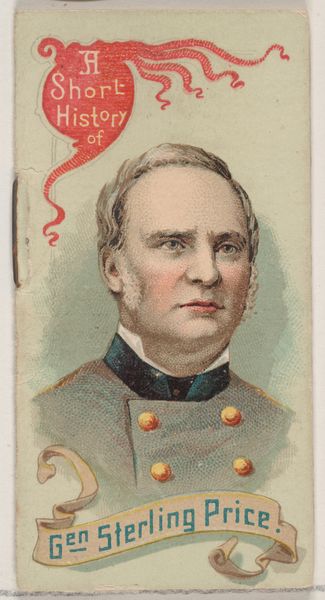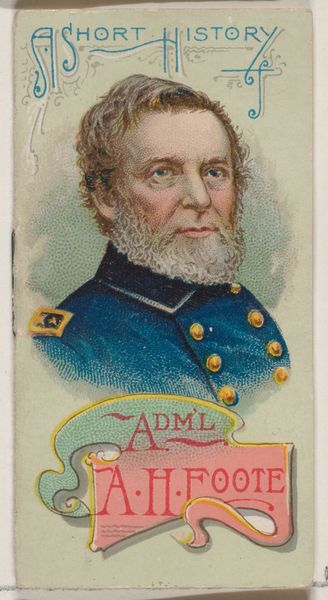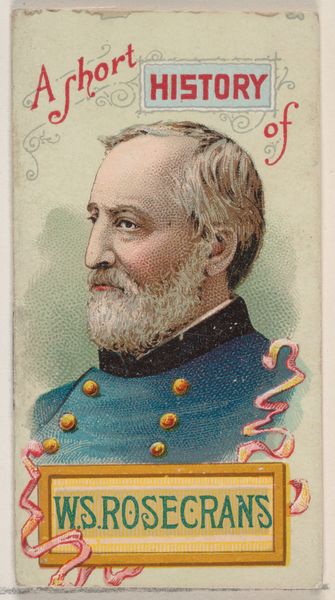
Henry Wager Halleck, from the Great Generals series (N15) for Allen & Ginter Cigarettes Brands 1888
0:00
0:00
drawing, print
#
portrait
#
drawing
# print
#
impressionism
#
caricature
#
figuration
Dimensions: Sheet: 2 3/4 x 1 1/2 in. (7 x 3.8 cm)
Copyright: Public Domain
Curator: Here we have an 1888 lithograph card produced by Allen & Ginter Cigarettes, part of their "Great Generals" series. This one depicts Henry Wager Halleck. Editor: It's oddly… unsettling. The rosy complexion clashes with his severe expression. And the oddly blurry background detail just emphasizes the man's stark formality. Curator: It’s a printed commercial item intended to be collected, and a curious case study in how heroes are manufactured, marketed, and consumed, literally. Consider the economic relationship inherent in creating this “heroic” imagery. Editor: Well, the figure certainly *reads* as powerful, perhaps intended to project reliability and steadfastness. The dark uniform is particularly important as a marker of this, especially set against that rather vague landscape that serves almost as a backdrop to his persona. Curator: It’s fascinating how this print collapses distinctions. You've got this almost "high art" portraiture adapted for mass consumption, distributed as a free insert with something as banal as a pack of cigarettes. Labor is involved at all points, too--from planting tobacco, creating cigarette papers, and lithographic printing! Editor: It almost feels… nostalgic. The military associations are clear signifiers. Consider the name, Allen & Ginter— Richmond, Virginia is prominently advertised. A deliberate attempt to court favor using imagery connected to Civil War leaders and conflicts? Curator: Precisely. This was shrewd branding that aligned a commercial enterprise with the powerful symbols of the era. Cigarette production after the war relied significantly on formerly enslaved labor, which further complicates our understanding of this image and how its makers are also consuming labor. Editor: It is striking how potent symbols can become intertwined with something as mundane as a cigarette card, subtly shaping perceptions and memories across time. Curator: The mass distribution amplified that, creating a shared cultural touchstone out of something disposable. A reminder that every object, even a tiny card, holds stories about production, consumption, and the social structures it embodies.
Comments
No comments
Be the first to comment and join the conversation on the ultimate creative platform.
